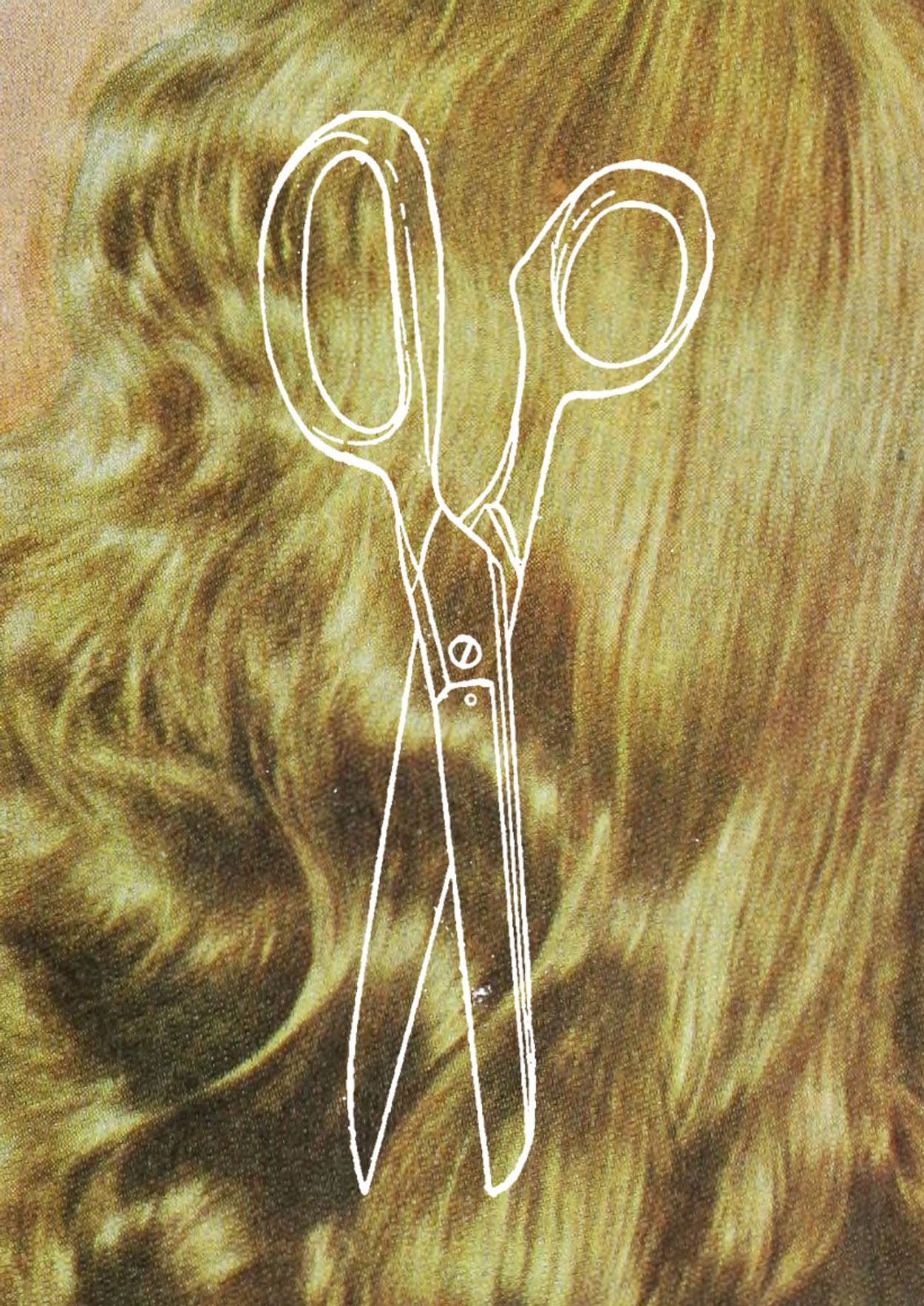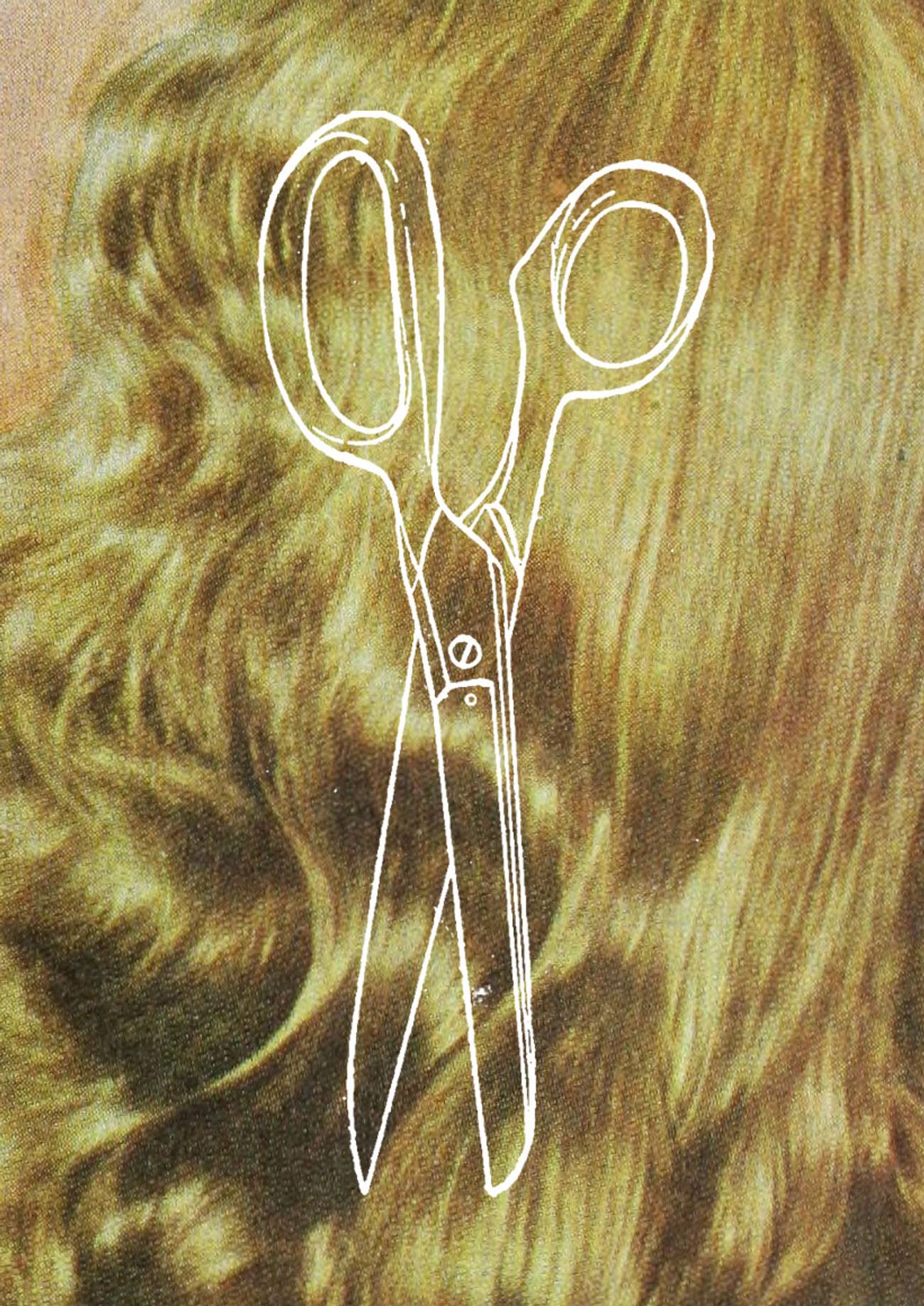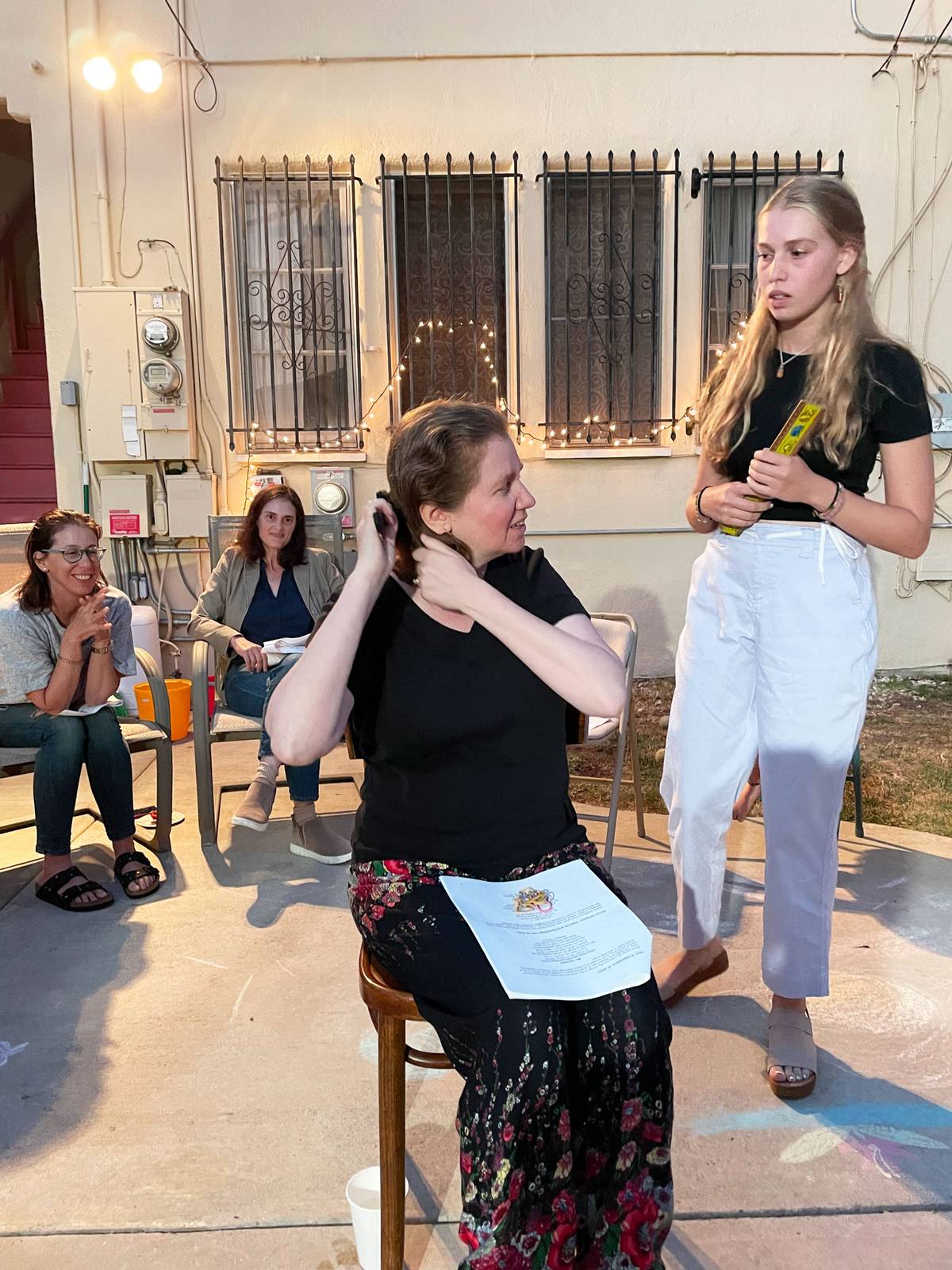Creating My Own Ritual
Facing treatment for breast cancer, I decided to cut my hair before chemo made it fall out. Drawing on Jewish tradition helped me turn a haircut into a ceremony imbued with meaning.




As a professor of Jewish studies, I encourage my students to use Jewish ritual in creative ways. In Introduction to Judaism at the University of Southern California, my students create a ritual marking a nontraditional event, like adopting a pet or graduating from high school. In Applied Jewish Wisdom at HUC-JIR’s Zelikow School of Jewish Nonprofit Management, my students learn about Jewish holidays, life cycle events, and texts not only for the sake of knowledge but to apply them creatively in Jewish organizational life. They compile an applied Jewish wisdom toolkit with ideas like a sukkah-construction team-building activity, expressing gratitude at the beginning of each week in “Modeh Ani Mondays,” and a mikvah-inspired swimming pool plunge marking the separation of sessions at a summer camp.
When I was diagnosed with breast cancer this spring, I turned to the same creative thinking I had taught my students. How could I apply Jewish tradition to give me strength for the bumpy road of chemotherapy?
I wasn’t the first to ask these questions, and many rabbis and ritual writers have offered creative, helpful applications of Jewish wisdom. There’s a book of reflective essays by Reform clergy and a collection of meditations, blessings, and other resources by the mikvah-based community center Mayyim Hayyim. Ritualwell, a treasure trove of creative Jewish ritual (which my students use for their assignments) has several meditations, ceremonies, and blessings for healing in general and for cancer or breast cancer specifically. But in all of these resources I didn’t find exactly what I needed: a ritual for cutting my hair before starting chemotherapy.
Rather than wait for my hair to fall out, I decided to cut it short and donate it to Children With Hair Loss. I chose to do this haircut in my backyard, surrounded by my husband, teenage children, and a few close friends, similar to a chemo haircut I learned about later, by Rabbi Anne Brener. I knew the haircut would be more meaningful if I incorporated elements of the Jewish tradition, so I decided to create my own ritual.
I called my friend Rabbi Shawn Fields-Meyer, and we brainstormed. We discussed several biblical and rabbinic texts about hair and haircutting, and we gathered relevant blessings, songs, and quotes. We compiled these into a ritual I called my “pre-chemo opshern,” inspired by the Hasidic upsherinish (Yiddish for haircut), when a 3-year-old boy celebrates his first haircut surrounded by family and friends, incorporating blessings, songs, and Torah study.
The opshern began with refreshments and upbeat music. The guests sat in a circle of chairs, and I explained why I decided to cut my hair.
After a brief recitation, guests were asked to study some texts—stories of the beautiful, powerful hair of Samson and Absalom, Halacha (Jewish law) prohibiting haircutting during the omer and the month of Av, and responsa about hair-covering and haircutting. Each chavruta (study pair) was asked: What do hair and haircutting represent in the Jewish tradition, and how could that be useful for me today?

I learned that hair is associated with beauty, sex appeal, strength, and power—and sometimes excessive focus on appearance. Jews are instructed not to cut their hair during periods of mourning, and the haircut that follows that period is associated with a transition to celebration. I explained how I liked my curls and considered them an important part of my identity. I was sad to lose them, but I decided to turn that loss into a celebration. Although the coming months would be difficult, the idea of starting treatment that would get rid of my cancer was a reason to rejoice.
Then the ritual haircut began. I donned a haircutting cape and moved my chair to the middle of the circle. My 18-year-old daughter put my hair into 12 ponytails, all at least 8 inches long (the minimum required to donate it). Each guest approached me and shared impromptu words.
A professor friend highlighted the internal and external resources I have to get through the difficult days ahead. A therapist friend talked about the balance between intentionality and lack of control in my cancer experience. A rabbi friend focused on the wonders of the body. My husband recalled several hairstyles I’ve had and how he associates them with different phases of our life together. After these beautiful words, each guest recited an inspiring Hebrew verse and cut off a pony tail.
As my daughter did some final snips, someone brought me a mirror. I cringed, barely recognizing myself with short hair. But I stayed strong, thinking about the special words my friends and family had just shared. I was further bolstered when we sang two songs I find meaningful about personal strength and getting out of a narrow place: "Ozi V’Zimrat Yah" and "Min Hametzar.”
We ended the ritual with a brief Havdalah ceremony, even though it was a Wednesday evening. What does Havdalah have to do with starting chemotherapy? First, it expresses wonder at various distinctions/separations: kodesh (holy) from chol (mundane), light from dark, etc. Chemo separates the dangerous cancer cells from the otherwise healthy body, and this ceremony marked a transition from normal life to the months of chemo. In addition, Havdalah highlights multiple senses. Chemo can affect several senses: sight, taste, and touch. “May this Havdalah ceremony bode well for my senses remaining intact,” I said. “And may I remember that any effects on my body are likely only temporary.”
The opshern made the idea of starting chemo a little easier to swallow, and the participants’ blessings have resonated in my head, bringing me strength during the difficult treatments I am currently going through. But I was not the only one standing on the precipice of changes. My family and friends now see me with an altered appearance and are vicariously experiencing some of the effects of chemo. Every one of the guests told me that they, too, found the ritual deeply meaningful at this moment of transition.
During treatment for cancer, so much is beyond our control. Some patients try to exert control by seeking second opinions or researching experimental treatments. I prefer to rely on my selected doctors—experts in their fields—to make decisions about my care. Even though so much is out of my control, I found small ways to claim autonomy: cutting my hair before it falls out, donating it, and engaging with my tradition to mark the momentousness of the occasion.
I hope that sharing this ritual—what would normally be a very private event—will be helpful for others being treated for cancer. I also hope it will inspire Jews of various backgrounds to make creative use of the ritual treasure trove of Judaism: for happy milestones, times of grief, and events beyond our control that we turn into moments of sweetness and communal meaning.
Sarah Bunin Benor is Professor of Contemporary Jewish Studies at Hebrew Union College–Jewish Institute of Religion. Her most recent book is Hebrew Infusion: Language and Community at American Jewish Summer Camps.